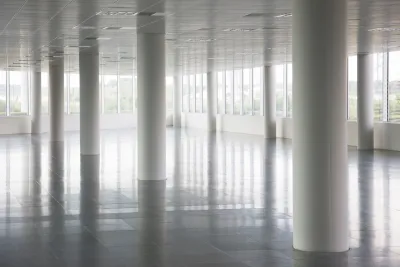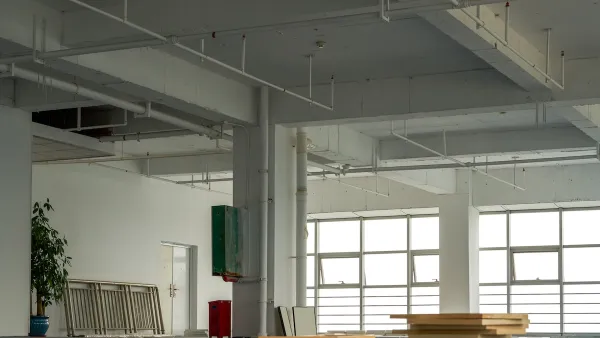Where conditions are right for office-to-residential adaptive reuse, projects can be completed faster and at a significantly lower cost than new construction.

A study from Gensler reveals that converting office buildings to housing could cost 30 percent less than new construction—where conversion is feasible. As Nish Amarnath explains in Smart Cities Dive, “Gensler said U.S. office vacancies reached a 30-year high in the second quarter of 2023, according to the Council of Economic Advisers,” prompting a strong interest in the adaptive reuse of office buildings.
According to the study, 25 percent of the over 1,000 buildings and sites surveyed met the criteria for conversion. “Factors including building form, location and floor plate size helped Gensler determine a building’s suitability for adaptive reuse into housing. Gensler notes that ‘unpleasant’ office features, like low ceilings, can be translated into desirable attributes for a residential building by removing office ducts, lights and drop ceilings to make way for ‘luxurious’ 11-foot clear ceiling heights.”
An adaptive reuse initiative in Calgary is expected to yield an increase in residential units of 24 percent in that city’s downtown core. Meanwhile, the U.S. federal government announced a $350 million investment to support office conversions and adjusted regulations to make office conversion easier for local governments.
FULL STORY: Office-to-residential conversion costs can be 30% lower than new construction: Gensler

National Parks Layoffs Will Cause Communities to Lose Billions
Thousands of essential park workers were laid off this week, just before the busy spring break season.

Retro-silient?: America’s First “Eco-burb,” The Woodlands Turns 50
A master-planned community north of Houston offers lessons on green infrastructure and resilient design, but falls short of its founder’s lofty affordability and walkability goals.

Delivering for America Plan Will Downgrade Mail Service in at Least 49.5 Percent of Zip Codes
Republican and Democrat lawmakers criticize the plan for its disproportionate negative impact on rural communities.

Test News Post 1
This is a summary

Test News Headline 46
Test for the image on the front page.

Balancing Bombs and Butterflies: How the National Guard Protects a Rare Species
The National Guard at Fort Indiantown Gap uses GIS technology and land management strategies to balance military training with conservation efforts, ensuring the survival of the rare eastern regal fritillary butterfly.
Urban Design for Planners 1: Software Tools
This six-course series explores essential urban design concepts using open source software and equips planners with the tools they need to participate fully in the urban design process.
Planning for Universal Design
Learn the tools for implementing Universal Design in planning regulations.
EMC Planning Group, Inc.
Planetizen
Planetizen
Mpact (formerly Rail~Volution)
Great Falls Development Authority, Inc.
HUDs Office of Policy Development and Research
NYU Wagner Graduate School of Public Service





























